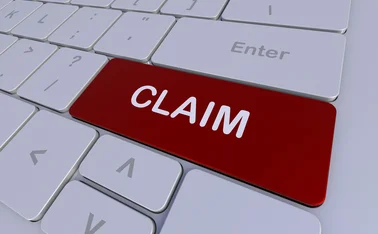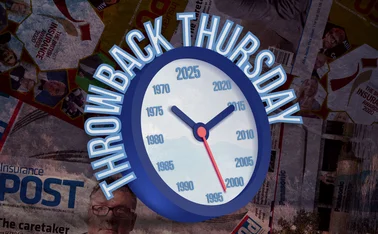
Legal: Driverless cars, shifting liability

Need to know
- Liability is shifting from driver to manufacturer
- To help establish responsibility, car makers may start installing black boxes as standard
- Motor insurers may want to encourage dashcams and other recording devices
Autonomous vehicles are making motor insurance liability shift from driver to manufacturer, explains Kennedys partner Rachel Moore.
Is a self-driving lorry coming to a road near you?
The recent announcement that small convoys of partially autonomous lorries will be trialled on major British roads by the end of next year was not universally welcomed by the British public or motor market. With the technology having the potential to cut both congestion and air pollution, why the guarded response?
In June, Kennedys published key findings from a piece of research into public attitudes on driverless vehicles. Overall, based on a survey of 1000 people, only 44% of UK adults supported the use of driverless cars and there is still a widespread view that humans exercise better judgement than computers. Road safety concerns are the main reason among non-supporters and public concern is greater when considering driverless commercial vehicles.
Aside from concerns about the technology, the findings also threw up what is sure to be a thorny issue: insurance liability.
The research demonstrated how traditional models of compulsory motor insurance will need to change as liability shifts from drivers to manufacturers. In identifying the issues stakeholder groups need to address to make such new vehicle technologies a reality, the impact on commercial insurers is also becoming clearer.
Liability shift
The expected shift in liability from driver to manufacturer is significant. Currently, in a motor accident, liability lies with the driver if it can be proven that the driver was negligent. So, where an accident occurs as a result of a fully autonomous vehicle, and with no human error involved, it follows that liability will shift from driver to manufacturer. Carmakers have, after all, had responsibility for programming the software and producing the vehicle. In 2015, Volvo took the bold move of publicly stating that it will take legal responsibility for accidents caused by its automated vehicles, if an accident is a result of a defect in its technology, provided that the handover is conducted properly and the car has not been misused.
However, for as long as humans actually sit in autonomous vehicles, causation will remain a thorny issue. Circumstances will occur that will question who was responsible for a vehicle failure resulting in an accident or injury – the ‘driver’ or the vehicle? In a scenario where an accident involves a partly autonomous vehicle, the potential liability matrix will be even more complex. If, for example, a distracted driver fails to activate manual mode in an emergency and where the autonomous technology appears to be faulty, is the manufacturer still responsible?
If liability is assumed to rest with the manufacturer, determining who is responsible for the accident will become extremely important for them, and accident data recorders such as black boxes are likely to become standard. Insurers may also further encourage the growing popularity of dashcams or smartphone recorders when driving.
This shift in liability could also affect many companies in the manufacturing supply chain including software developers, software providers and telecoms service providers. Each company and its insurer will need to be aware of their potential exposure to liability claims.
The future
There is a lot for insurers to talk about. As well as addressing the change in insurance needs where premiums are intrinsically linked to vehicle safety, insurers of autonomous vehicle manufacturers will need to work with their customers to ensure such manufacturers:
- Have manufacturing and operating procedures in compliance with the UK’s strict consumer protection legislation
- Have clear risk management and contractual arrangements with suppliers to manage these obligations effectively
- Consider ways to limit liability through agreements with automotive customers
- Review post-sale monitoring of products and approach to managing liability issues
- Review the efficiency and effectiveness of product recall procedures,
- And provide own customers with clear user guidance and instructions as well as maintenance and servicing requirements for products
The Automated and Electric Vehicles Bill which was heralded in the Queen’s Speech in June is expected to follow similar principles to the former Vehicle Technology and Aviation Bill, with the focus being on the vehicle rather than the driver.
The timing for the Bill remains uncertain but when it does arrive, the wording will need to be keenly reviewed by insurers and manufacturers alike.
Further reading
Only users who have a paid subscription or are part of a corporate subscription are able to print or copy content.
To access these options, along with all other subscription benefits, please contact info@postonline.co.uk or view our subscription options here: https://subscriptions.postonline.co.uk/subscribe
You are currently unable to print this content. Please contact info@postonline.co.uk to find out more.
You are currently unable to copy this content. Please contact info@postonline.co.uk to find out more.
Copyright Infopro Digital Limited. All rights reserved.
As outlined in our terms and conditions, https://www.infopro-digital.com/terms-and-conditions/subscriptions/ (point 2.4), printing is limited to a single copy.
If you would like to purchase additional rights please email info@postonline.co.uk
Copyright Infopro Digital Limited. All rights reserved.
You may share this content using our article tools. As outlined in our terms and conditions, https://www.infopro-digital.com/terms-and-conditions/subscriptions/ (clause 2.4), an Authorised User may only make one copy of the materials for their own personal use. You must also comply with the restrictions in clause 2.5.
If you would like to purchase additional rights please email info@postonline.co.uk








